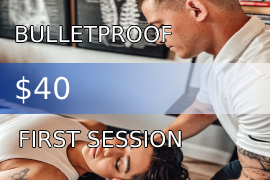Why does my jaw hurt?
Jaw pain can come from various sources. The pain can be coming from the anatomy of your mandible (jaw) or your maxilla (upper teeth). In addition, it can come from muscular tension due to night clinching or overuse. Most commonly, jaw pain is caused when your articular disc (picture on left) is not tracking properly.
Typical symptoms with jaw pain?
- Clicking with mouth opening and closing
- Pain when talking and eating
- Pain along the face, ear, jaw, neck and shoulders
- Headache
- Throbbing feeling at rest
How our approach is different?
We take an evidence-based approach to treatment of the TMD. Recent research has shown that the trigeminal nerve is an often overlooked issue concerning TMD. This is due to the fact that the Trigeminal nerve has a pain distribution that is very similar to what is demonstrated with TMD. In addition, The chemicals released with injury to the TMJ can lead to inflammation of the trigeminal nerve. Several recent studies have demonstrated that trigeminal neuralgia has been commonly mistaken for TMD or progress in rehab has stagnated due to inflammation of the Trigeminal nerve. What this means is that a thorough assessment must be performed on more than just the TMJ. Our practitioners will work to get to the bottom of your pain by using the most recent TMJ practices!
How we can help?
Our practitioners start by assessing the anatomy of the patient’s mouth. The muscular strength, mobility, and joint mechanics will be assessed and contrasted with x-ray results. Treatment will include joint mobilization, soft tissue work, and neuromuscular retraining to correct the deviations seen during the exam. Our clinic contracts with several dentists in the area to provide truly comprehensive TMJ care.
Recent research?
Today is an exciting time for the development of TMJ research! New research has shown that the TMJ has the ability to regenerate structures within the joint with proper conservative care. Many patients are fearful of clicking and popping in the joint because they believe that their condition is worsening. However, with proper treatment, the retrodiscal lamina (tissue behind the disc) has the ability to be converted into a “new” disc. This means that your joint can be preserved and pain decreased with TMJ rehabilitation!

